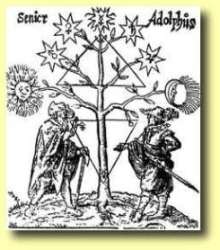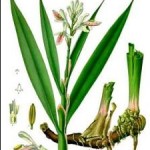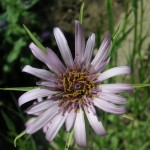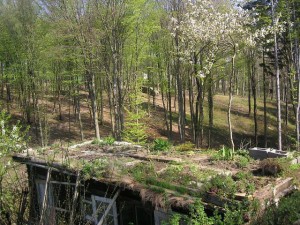Pflanzen&Gewürze
HILDEGARD OF BINGEN´s MEDICINE
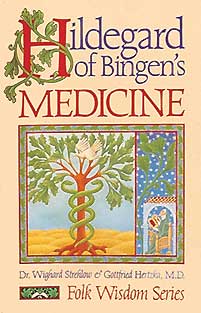
HILDEGARD OF BINGEN´s MEDICINE
Hildegard of Bingen – a legendary healer, visionary, musician, artist, poet, and saint. Her works include seventy-seven symphonic compositions; Scivias, a compilation of her visions; and her two major medical works, Causae et Curae, the first christian medical compendium, and Physica – nine volumes on natural healing.
Hildegard‘s wisdom and healing art is not just a story for Germany or Europe, but since God is the creator of the entire universe, it relates to all of humanity. Therefore you will find here medicinal and nutritional informations in as many languages, as you can help me to translate. Please send translations to praxis@.st-hildegard.com
About Hildegard of Bingen’s Medicine
This ground-breaking contribution to medicine and healing contains translations of Hildegard text which reflect the high point of medieval, alchemical, and healing science. Commentary by the authors who have worked clinically with Hildegard’s wisdom for over thirty years includes information on ways to treat nervous disorders, indigestion, heart problems, and cancer.
About the Author(s) of Hildegard of Bingen’s Medicine
Dr. Gottfried Hertzka is a medical doctor in Germany, and author of the bestselling book on Hildegard medicine, So heilt Gott. He has worked clinically with Hildegard’s theories for thirty years. Dr. Wighard Strehlow was a research chemist in the pharmaceutical industry in West Germany, and now works with Dr. Hertzka in the Hildegard Practice at Konstanz, West Germany.
PROJECTS:
Plans for a New Foundation
Abbey of St. Hildegard owe the plan to found a new convent, which would revive the old religious house at Eibingen and also be a link to the one destroyed by the Swedes at Rupertsberg in 1632 (founded by Hildegard herself), to Bishop Peter Josef Blum of Limburg (1842-1883)
INFORMATION:
-
http:// > www.regionalgeschichte.at <
THE HOLY BODHI TREE
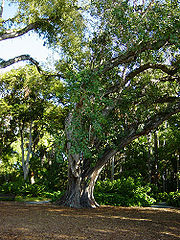
>> BODHI TREE – Pappelfeige <<
(Heiliger Feigenbaum; Bodhi-Baum; Ficus religiosa)
> Hildegard v. Bingen-PHYSIKA ,De Arboribus.About Trees, Chap. 3 <
>> THE BODHI TREE & GAUTAMA <<
The Bodhi Tree, also known as Bo (from the Sinhalese Bo), was a large and very old Sacred Fig tree (Ficus religiosa) located in Bodh Gaya (about 100 km (62 mi) from Patna in the Indian state of Bihar), under which Siddhartha Gautama, the spiritual teacher and founder of Buddhism later known as Gautama Buddha, achieved enlightenment, or Bodhi. In religious iconography, the Bodhi tree is recognizable by its heart-shaped leaves, which are usually prominently displayed. It takes 100 – 3,000 years for a bodhi tree to fully grow.[citation needed]
The term „Bodhi tree“ is also widely applied to currently existing trees, particularly the Sacred Fig growing at the Mahabodhi Temple, which is allegedly a direct descendant of the original specimen. This tree is a frequent destination for pilgrims, being the most important of the four main Buddhist pilgrimage sites. Other holy Bodhi trees which have a great significance in the history of Buddhism are the Anandabodhi tree in Sravasti and the Bodhi tree in Anuradhapura, Sri Lanka. Both are believed to have been propagated from the original Bodhi tree.
In den Berichten des Buddha über seine Erleuchtung ist mit keinem Wort davon die Rede, daß ihm die Erkenntnis unter einem Baum gekommen sei. Einige Buddhismus-Forscher halten daher den Baum als Ort der Bodhi für ungeschichtlich und mutmaßen, daß vorbuddhistische Baumkulte in den Buddhismus Eingang gefunden hätten. Aber ist es nicht völlig natürlich, daß ein hausloser Wandermendikant, wo immer er sich niederläßt, dies unter einem Baum tut, der ihn nachts vor dem Tau und tags vor der subtropischen Sonne beschirmt? Daß Siddhattha seine zur Erleuchtung rührenden Betrachtungen am Fuß eines Baumes anstellte, muß man als selbstverständlich ansehen, und daß er diesen Baum, der zufällig ein Assattha war, an seinen herzförmigen Blättern mit der langen, seitlich abgebogenen Spitze als Assattha oder Pippala erkannte und dies, zum Buddha geworden, vor seinen Mönchen beiläufig erwähnte, hat so hohe Wahrscheinlichkeit, daß man es getrost als historisch ansehen darf.
Neem Tree, Ayurveda, Medicine & Worship
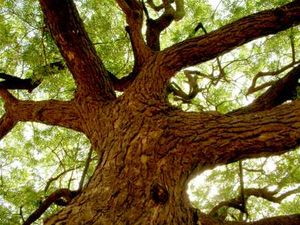
Holy Neem Tree – Azadirachta indica
> NEEM – Ayurveda, Medicine & Hindu Worship <
Neem (Azadirachta indica, syn. Melia azadirachta L., Antelaea azadirachta (L.) Adelb.) is a tree in the mahogany family Meliaceae. It is one of two species in the genus Azadirachta, and is native to India, Myanmar, Bangladesh, Sri Lanka, Malaysia and Pakistan, growing in tropical and semi-tropical regions. Other vernacular names include Neem (Bengali), Arya Veppu (Malayalam), Azad Dirakht (Persian), Nimba (Sanskrit and Marathi), DogonYaro (in some Nigerian languages), Margosa, Neeb (Arabic), Nimtree, Vepu, Vempu, Vepa (Telugu), Bevu (Kannada), Kohomba (Sinhala), Vempu (Tamil), Tamar (Burmese) and Indian Lilac (English). In East Africa it is also known as Mwarobaini (Swahili), which means the tree of the 40, as it is said to treat 40 different diseases.
Der Neem-Baum war bis vor wenigen Jahren in Indien, Burma, Thailand und weiteren angrenzenden Staaten beheimatet. Etwa in den sechziger Jahren unseres Jahrhunderts wurde er auch in Afrika und einigen tropischen Inseln kultiviert.
Der einzige Grund, warum der Baum nicht den Weg nach Europa gefunden hat ist der, dass er zwar große Hitze und hohe Luftfeuchtigkeit problemlos verträgt, jedoch äußerst kälteempfindlich ist.
Seit tausenden Jahren werden die einzelnen Teile des Baumes in Indien und anderen Regionen als Pflege- und Heilmittel eingesetzt.
Im Ayurveda, der uralten indischen Medizinschule sind die Produkte des Neem-Baumes ein integrierter Bestandteil.
Über Auftrag der WHO – Weltgesundheitsorganisation, arbeiten zwei voneinander unabhängige Institutionen in Amerika an der Erforschung der vielgestaltigen Einsatzmöglichkeiten von Neem-Produkten.
Das eine Institut ist die Neem Association und das zweite die Neem Foundation.
In Europa befasst sich seit den siebziger Jahren Prof. Schmutterer von der Universität Gießen mit der Neem-Forschung.
Die Ergebnisse aller drei Labors sind in den wesentlichen Punkten die gleichen:
-
Neem-Produkte wirken sowohl bei innerlicher, als auch bei äußerlicher Anwendung.
-
Neem-Produkte werden aus Blättern, Rinde und Samenkernen hergestellt.
Blätter und Rinde werden getrocknet, zerstoßen und zu Tees und Extrakten verarbeitet. Aus den Samenkernen wird nach dem schälen und mahlen das hochwirksame Neem-Öl gepresst. Der dabei anfallende Pressrückstand wird als Neem-Cake (Presskuchen) ebenfalls weiterverwendet.
Weitere Institute, die sich mit der Neemforschung befassen:
-
State University New JerseyProf. Maramorosch
-
UCLA – Universität Los Angeles Forschungsbericht
-
Hochschule Weihenstephan BRD Instititut für Botanik und Pflanzenschutz
-
Prof.DI Thomas Lohrer
-
Max Planck Institut
-
Umweltingenieursbüro OETZEL BRD Umweltanalysebericht
Der Neem-Baum, der aus Indien stammt und dessen botanischer Name Azadiracta Indica lautet, hat eine lange Tradition auf dem Subkontinent.
Der Begriff Azadiracta ist eine Ableitung und Neukombination aus den Sanskritwörtern Azad und Draksha, was soviel wie „Baum der Freiheit“ bedeutet.
Der Neem-Baum stand und steht im Ruf, Menschen, Tiere, Ernte und die Erde vor Krankheiten und anderen Übeln zu schützen.
Seit Jahrhunderten benutzen indische Bäuerinnen und Bauern die Blätter und Samen des Neem-Baumes als natürliches Pflanzenschutzmittel.
Die Pflanze produziert ein Öl, das andere Nutzpflanzen vor dem Befall durch Pilze und Insekten schützt.
Es war die Natur, die den Wirkstoff durch molekulare Evolution entwickelt hat, und es waren indische Bauern, die sich dieses „Naturgeschenk“ zu Nutze gemacht haben.
Den Hindus gilt der Baum als heilig.
Der Neem-Baum braucht wenig Wasser, gedeiht auf fast jedem Boden, spendet Schatten und Kühle, weswegen er bevorzugt vor Wohngebäuden, Tempeln und auf Viehweiden gepflanzt wird und sorgt für reine, gesunde Luft.
Kranke schlafen auf seinen gesundheitsfördernden Blättern, Gesunde reiben sich die Haut mit seinen heilende Blättern ein, in Reissäcken schützen die Blätter die kostbare Nahrung und das Saatgut vor Reisschädlingen und auch bei der Zahnpflege ist der Neem-Baum unentbehrlich.
Kleine Ästchen werden gekaut, um die Zähne weiß und sauber zu halten und vor Krankheiten zu schützen.
Wer es westlicher liebt, kann auch Neem-Zahncreme erwerben.
Mit einem Wort: Seit Jahrhunderten werden der Neem-Baum, sein Holz, seine Früchte, seine Samen und sein Öl zum Wohle aller frei und uneingeschränkt verwendet und so soll es auch bleiben.
Die Autorin ist Mitarbeiterin beim Umweltinstitut München und im Beirat des Gen-ethischen Netzwerkes.
Quelle: www.dosha.at
NÖ Heckentag 2009

Der NÖ Heckentag bietet auch 2009 wieder eine große Auswahl an einheimischen, regional angepassten Laubgehölzen und zahlreichen Sortenraritäten bei den Obstbäumchen. Ob Dirndl oder Liguster, Holler oder Schneeball, Elsbeere oder Pimpernuss, Freunde heimischer Wildgehölze werden garantiert fündig und dürfen sich über hohe Qualität und günstige Preise freuen.
Die Pflanzen für diese Aktion stammen ausschließlich aus Niederösterreich und wurden von den Mitarbeitern des Vereines Regionale Gehölzvermehrung (RGV) händisch besammelt, professionell als wertvolles Saatgut aufbereitet und in den Partnerbaumschulen zu kräftigen Jungpflanzen herangezogen.
YOGALEHRER IM HINDUISMUS
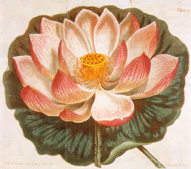
YOGALEHRER IN INDIEN
oder: “ YOGI in INDIEN „
Mit insgesamt 390 Versen stellt die Yoga-Shikha („Krone des Yoga“)-Upanishad die umfassendste Yoga-Upanishad dar. Sie besteht aus sechs Kapiteln, deren letztes einmal eine selbstständige Abhandlung gewesen zu sein scheint. Dieses > Shaiva-Werk < soll, ähnlich wie die > TANTRAS <, den spirituellen Suchern dienen, die mit den Schwierigkeiten des dunklen Zeitalters (kali-yuga) zu kämpfen haben.
Tantra & Landwirtschaft, Tantra in Agriculture
* Internationales Jahr der Astronomie 2009 *
>Immerwährender Bauernkalender< > Los & Schwendttage <
COSMOVISIONS IN HEALTH AND AGRICULTURE IN INDIA
Prabha Mahale and Hay Sore
There are two major cosmovision traditions in India. The ‘Great Tradition‘, which represents the Sanskrit or classical tradition described in the Vedas and the ‘Folk Tradition‘, representing popular Hindu tradition and the tradition of the tribal peoples.
The rituals and practices of the Hindu tradition, both classical and folk, is a continuing history. They both represent a living cult that is deeply ingrained in social, religious and cultural traditions, both in the orthodox and the popular sense. Generally they converge, occasionally they diverge. There is also the indigenous system of the original inhabitants, the tribal people who have another history and knowledge base.
The Vedas are a collection of hymns, mantras and prayers written in Sanskrit, that communicate the sacred knowledge of the cosmic order visioned by the rishis or seers.
Thus, rishis are exalted beings who manifest divine wisdom and include the visionary sages of ancient India to whom the Vedas were intuitively revealed.
A rishi or seer has a perfectly subjective and objective mind, because it is free from the six prejudices: lust,anger, greed, intoxication, delusion, jealousy. Because of this he is able to make full use of the five senses and his mental capacity.
The senses naturally move out to see, hear, touch, smell and taste, where as the mind can move outward with the senses and move inward and experience an inner non-sensory world. For a seer, the way to understanding nature is to become one with it.
Vedas cover diverse branches of learning, such as astrology, medicine, law, economics, agriculture and government. The Vedic tradition is the root of cosmology and knowledge for the vastu majority of Indians, Hindus and Jains.
In India’s traditional thought, there is no distinction between the sacred and the profane: everything is sacred. The essence of this tradition is to live in partnership with, rather than to exploit nature. The most complete holistic perspective of the universe was evolved by Vedic culture about 6000 to 8000 years ago, and has been sustained by Indian civilisation throughout the millennia.
The Vedas have played a major role in bringing together mankind and faith in nature and have guided man through Rta, the cosmic morality. The cosmology, the total worldview, had the relationship between the Human and Nature as its core. All life is believed to be interrelated and interwoven.
According to Hindu mythology Brahma is the creator, Vishnu the conserver and Shiva the destroyer of the universe.
The basic theory of cosmovision is known as Siddhanta. The Sarva Tantra Siddhantas cut across all areas of traditional Indian science.
The following elements are important for health and agriculture:
· Understanding the composition of all material, animate as well as inanimate, in terms of the five primordial elements, the Pancha Mahabhutas: vayu (air), jala (water), prithvi (earth), agni (fire) and akasha (ether, sky or space).
· Understanding the properties and action of human beings, animals and plants, in terms of three biological factors: vaata, pitta and kapha. Vaata: slender, light and averse to sunlight. Pitta: medium size, abundancy and fond of sunlight. Kapha: stout and bulky, abundant flowers and fr uits, housing many creepers.
· Understanding the fundamental existential principles of dravya (matter), guna (quality) and karma (action).
· All living beings are born and evolve from the five Mahabhutas earth, water, fire, air and space.
In death they go back to them. The Mahabhutas are the primary natural resources essential for all life forms. Through myths and rituals mankind is ever reminded of his duty (dharma) to sustain these elements.
Gods and Goddesses from the Great Tradition
The cosmovision of ancient India can be illustrated by a quotation from an Ayurvedic text:
‘The basic aim of the concepts and fundamental principles of all the sciences is to establish happiness in all living beings. But a correct and thorough knowledge of the basic principles of the universe and the (human) body leads to the correct path to happiness, while deceptive knowledge leads to the wrong path.‘
The cosmic forces were personified in the form of various gods and goddesses, whose influence or failure to maintain cosmic morality was considered the main cause of an imbalance in health. They play a role in healing and thus it was the responsibility of every individual to observe the prescribed rules.
Most of the Vedic rituals are institutionalised in Hindu Dharma and are a part of the day-to-day life of the people.
Varuna is the God of waters and all the rivers. Ganga, Yamuna, Saraswati and Kaveri are deities of the vast water cosmogony. No ceremony of birth, death or marriage is complete without the ritual purification of water. Vegetative and animal life forms such as lotus, coconut, mango, snake, tiger and cow are central in Hindu myths. Cows, which are a symbolical representation of the earth, have traditionally been objects of great worship and reverence. The killing of the cow is listed as one of the major sins in Hinduism: ‘All that kill, eat and permit the slaughter of the cow will rot in hell for as
many years as there were hairs on the body of the cow.‘ [Artha Shastra of Kautilya].
The teachings in ancient scripts such as the Upanishads, emphasise the importance of trees. Reverence for trees is expressed in the various tree worships related to the Ficus species. Trees have also been linked with penance, education and religious activities.
Prithvi, the Mother Earth, is the divine mother who sustains plant and animal life. She is perceived to be a powerful Goddess for the world as a whole.
The cosmos itself is seen as a great being, a cosmic organism. Different parts of the world are identified as parts of her body. The earth is called her loins, the oceans her bowels, the mountains her
bones, the rivers her veins, the trees her body hair, the Sun and Moon her eyes and the lower worlds her hips, legs and feet. Vayu (air) in the Vedic pantheon is associated with Indra, the God of the firmament, the personified atmosphere.
He is prana, the pure breath of life. Finally the sun, the great ball of fire is the energiser, the life giver.
The Goddesses too illustrate important ideas in Hindu philosophy. For example, Prakriti denotes physical reality. It is nature in all its complexity, orderliness and intensity. The Goddess Sri, or Lakshmi, is today one of the most popular and widely venerated deities.
In early Vedic literature she was invoked to bring prosperity and abundance. In the Sri- Sukta (an appendix to the Rig Veda dating from pre-Buddhist times) she is described as moist in cow dung. Clearly, Sri is associated with growth and the fecundity of moist, rich soil. Villagers, particularly women, worship Sri in the form of cow dung on certain occasions. Lakshmi is associated with the lotus (symbolising vegetative growth) and the elephant (whose power brings fertilising rains). Together they represent the blossoming of life. Durga is one of the most formidable Goddesses of the Hin du Pantheon. Her primary mythological function is to combat the demons who threaten the stability of the
cosmos.
Deities of villagers
In the villages, these goddesses are worshipped by upper caste Hindus. The ‘Great Gods and Goddesses‘, though acknowledge d to be in charge of distant, cosmic rhythms, are only of limited interest to most village people. Every village has its own village deities.
They often share the names or epithets of deities in the Sanskrit pantheon but they do not necessarily have any similarity with ‘the Great Tradition‘ Goddesses. Unlike the ‘Great Gods‘ whose worship is often restricted to certain castes, these deities are the goddesses of the whole village. All over southern India, these village deities are almost exclusively female. They are not usually represented by anthropomorphic images but by uncarved natural stones, trees or small shrines. The village and its immediate surroundings, therefore, represent for the villagers a more or less complete cosmos.
The central divine power impinging on, or underlying this cosmos is the village goddess. The extent to which order and fertility dominate the village cosmos is determined by the relationship between the goddess and the villagers.
Their relationship is localised and aims not so much at individual welfare but at securing the welfare of the village as a whole. In return for their worship, the goddess ensures that the villagers have good crops, timely rain, fertility and protection from diseases, spirits and untimely death.
The entire ritual complex built around agricultural operations involves protective, prohibitive and promotional values. For example, the villagers in Pachara (West Bengal) propitiate Lakshmi and Manasa a number of times each year. While Manasa is worshipped generally during the cultivation season, Lakshmi is worshipped during preharvest or post-harvest periods.
Furthermore, many of the rituals performed for living human are also being extended to Mother Earth. The Adi Perukku agricultural festival is celebrated in Tamil Nadu. On the eighteenth day of the Tamil month of Adi (between mid-July and mid-August) this festival hails the arrival of the monsoon. Reverence is paid to the River Goddess and farmers are encouraged to sow seeds.
An important aspect of this festival is the sowing of nine varieties of seeds: wheat, paddy, toordal, green gram, groundnut, bean, sesame, black gram and horse gram (Navadanya) in a pot.
It is called Mulaipari and is a forerunner of the present germination test. Apart from the festivals of the village goddess, there are a number of ritual performances that directly or indirectly relate to the various stages of managing agriculture production and consumption. These are observed by individual families and by particular caste communities. These rituals vary from region to region and from community to community.
But the ultimate goal is the same: the worship of deities,implements, bullocks, and spirits in the fields to ensure a good harvest. (Erntedankfest) http://de.wikipedia.org/wiki/Erntedankfest
Classical Indian Agricultural Science – In the Vedas, particularly Rig Veda and Atharva Veda a great deal of attention is paid to agriculture, implements, cattle and other animals, and the rains and harvests.
Ancient texts relating to agriculture are the Vrkshayurveda (Ayurveda of plants) and the Krshisastra (science of agriculture) and Mrgayurveda (animal science).
They provide a wealth of knowledge on such subjects as the collection and selection of seeds, germination, seed treatment, soil testing and preparation, methods of cultivating plants, pest control and crop protection, the rearing of cows and the care of draught cattle, for example.
Outbreaks of disease and pest attacks on plants are viewed as being based on the same principles as the epidemics that affect the human and animal species. The basic understanding is that epidemics occur because of imbalances in the ecosystem. One of the major causes of such inbalance is human error or living in the wrong way which leads to an incorrect intervention in natural processes. The main protection against epide mics is a thorough knowledge of nature which makes it possible to avoid causing serious imbalances in the ecosystem.
Vrkshayurveda – the science of plant health – was accorded a prime position in the history of agriculture in India. The three major ancie nt texts that provide the basis for Vrkshayurveda were compiled by Varahamihira, Chavundarya and Sarangadhara. These texts provide indications of an integrated approach to controlling crop pests and diseases through soil, seed, plant and environmental treatment.
These different methods have several characteristics in common and can be used to launch a multi-pronged attack on pests and diseases; to improve plant health and increase resistance; to enrich the soil with nutrients and increase useful microbial activity, and finally to ensure a broad spectrum effect on pests and diseases.
Folk knowledge – Farmers‘ perception and understanding of ecology, crops, land, labour, livestock and agricultural implements has a profound bearing on the strategy they adopt in their day to day agricultural operations.
Their ideas about climate, crops, the optimum climatic conditions required for cultivation and beliefs relating to crops and fruits are the results of the knowledge they received from their ancestors and their own long experiences in the natural laboratory of their fields. Farmers have the ability to identify various types of seeds and seedlings and this is often based on morphological characteristics. By looking at the nature of the flowers on a plant, an estimation of the yield can be made (Bauernkalender).
The technically useful items of indigenous agricultural practices are often documented without reference to the symbolic or ritual matrix in which they occur. It is a debatable point whether, by looking at these practices from a mere scientific and rational perspective does not devalue them. Despite the fact that farmers have been subject to external influences, they still continue to experiment and make innovations, sometimes adapting external knowledge to indigenous knowledge and sometimes revitalising their own knowledge.
There are indigenous institutions that regulate community administration, decisionmaking, elements of farming and the rites and rituals related to cosmovison. In the villages, religious functionaries such as Brahmin priests, and in the tribal communities of the Eastern Ghats traditional functionaries such as the Naiks and Disaris play an important role.
The functioning and strength of the institutions that kept the environment protected, depends on how successfully future citizens are introduced to the heritage that generates respect for these institutions. Knowledge systems cannot grow if traditional cultural anchors are not properly located.
Culture provides a ‘grammar‘, while technology provides new words. The meaning of life can only be discovered if both are blended together.
Buchtipp: Maria Treben
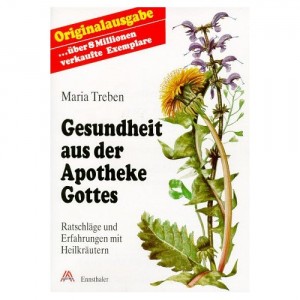
This Site is dedicated to the medicinal herbs used by Maria Treben, the reknowned Austrian herbalist, in her healing works.
Maria Treben, born Günzel, (born 27 September 1907 in Saaz, died 26 July 1991 in Grieskirchen) was an Austrian author and herbalist who in the 1980s became famous through her two books: „Health Through God’s Pharmacy“ and „Maria Treben’s Cures“ .
Her first book was translated into 24 languages and sold over 8 million copies.
In the 17th century, the Swedish doctor Claus Samst took up dispensing based on tradition: the herb elixir “ Swedish Bitters “ made from extracts of 11 herbs. The varied effects of which increase through mixture with each other. The digestive system is activated and regulated – to the benefit of one’s health and well-being – Maria Treben, an Austrian herbalist and deeply religious woman, re-discovered the beneficial potion in the 1970s.
Treben addressed seminars and presented at natural health conferences in Germany, Austria and across Europe, attracting hundreds of people. She is perceived as a pioneer of the renewed interest for natural remedies and traditional medicine at the end of the Twentieth century.
Konservieren von Kräutern
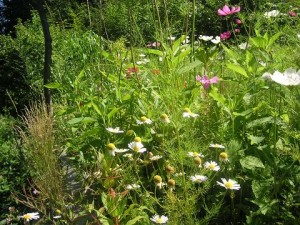
Konservieren von Kräutern
1.) Trocknen – Das Trocknen verhindert, dass pflanzeneigene Fermente die Wirkstoffe umwandeln oder abbauen. Ausserdem wird Pilzen und Bakterien durch die Trocknung der Nährboden entzogen.
Hildegard – Galgant, Wurzeln & Rhizome
GALGANT
Galgant – (Alpinia officinarum HANCE.) war zu Hildegards Zeiten sehr teuer und kostbar. Er kam über die erwähnten arabischen Handelskanäle aus China. Die Heilige empfiehlt Galgant bei dem dreitägigem Fieber, „Gebrechen der Lunge“, Magenschmerzen und vor allem bei „Herzweh“: „
Wenn schlechte Säfte in den Eingeweiden und in der Milz eines Menschen überhandgenommen und dem Herzen durch Schwarzgalle viel Leid zugefügt haben, soll er Galgant und Bertram (Farn, Anm. d. Autors) zu gleichen Gewichtsteilen nehmen und ein Viertel von jedem einzelnen von ihnen weißen Pfeffer oder, wenn er keinen weißen Pfeffer hat, viermal soviel Pfefferkraut und stoße dies zu Pulver …“
Das ganze wurde mit Bockshornkleesaft (siehe Ayurveda) vermischt, mit Sonnenwärme zu Kuchen gebacken und „sowohl nach dem Frühstück als auch nüchtern“ gegessen.
Im gesamten Fernen Osten ist Galgant seit Jahrtausenden ein beliebtes Gewürz und Heilmittel !
Der Name wird von chinesischen „liang-kiang“ abgeleitet (milder Ingwer). Auch die Ayurveda-Ärzte in Indien kannten die Heilpflanze.
In Ostasien werden in ihrer medizinischen Wirkung drei verschiedene Galgant-Arten unterschieden.
Da die westliche Medizin sich sehr viel von den Inhaltsstoffen dieser Pflanze verspricht, sei ein kleiner Abstecher in die Ethnobotanik erlaubt. Orang Aslis, Angehörige der Urbevölkerung Malaysias, denen eine Zeichnung der Galgantwurzel gezeigt, und denen der indische Namen „Kula Yoga“ genannt wurde, führten in einen Garten. Dort wuchs neben vielen anderen Kräutern die bis zu zwei Meter hohe und orchideenähnlich blühende Galgantpflanze.
Die malaysischen Volksmediziner verwenden Galgant interessanterweise heute noch ebenso wie Hildegard von Bingen. Es finden sich sowohl die Anwendungsgebiete „Fieber“ als auch „Magenschmerzen“. Im „Dictionary of Malayan Medicine“ wird Galgant kombiniert mit Ingwer bei Kindbettfieber empfohlen. Saft aus Lengkuas genanntem Galgant wird zusammen mit weißem Pfeffer und Salz bei Meteorismus empfohlen.
Wer morgens unter Magen-Darmschmerzen leidet, nimmt nach dem Aufstehen drei Scheiben frischer Galgantwurzel mit drei Scheiben Gelbwurz (Curcuma longa, indische Zingiberazeenart), drei Zwiebelscheiben, drei Knoblauchzehen und sieben Körner von weißem Pfeffer. Andere Galgant-Arten wie Lengkuas kechil empfehlen malaysische Ärzte bei Brustschmerzen, nach einer Kindsgeburt wird den Frauen ein Brei aus Galgant-Blättern auf den Bauch geschmiert.
Eine besonders Cineolreiche Variante der Pflanze, Lengkuas raya, nimmt man in Perak – einem malaysischen Bundesstaat – bei Schwindelanfällen.
In der malaysischen Volksmedizin gilt die kleinere, medizinisch wirkungsvollere Galgant-Art, die ausschließlich in China wächst und auch in Malaysia von dort importiert wird, wie übrigens bei dem berühmten (Ende des 11. Jahrhunderts in Malaga in Spanien geborenen) arabischen Arzt Ibn-al-Baytar, als Aphrodisiakum. Sie heißt dort lenkuas China.
Eine interessante und vielversprechende Entdeckung machten letztes Jahr jedoch deutsche Forscher. Sie wiesen nach, dass im Galgant enthaltene ätherische Öle (Cineol und Eugenol) in der Lage sind, verklumpte Blutplättchen aufzulösen. Auch Versuche in Kliniken laufen bereits. Möglicherweise weisen diese Erkenntnisse einmal zu einem Medikament, das Herzinfarkt verhindern oder seine Folgen lindern kann. Auch japanische Forscher haben in der Wurzel jetzt die schon von Hildegard behaupteten herzwirksamen Stoffe festgestellt.
In volksmedizinischen Werken im Fernen Osten – soweit sie in Englisch übersetzt und zugänglich – ebenso wenig wie in den europäischen einen Hinweis auf herzwirksame Inhaltsstoffe in der Galgantwurzel gefunden. Nur Hildegard von Bingen hat das, was die Wissenschaftler bereits vor 800 Jahren beschrieben, in ihren medizinischen Büchern dargestellt. Religiös orientierte Mediziner sehen auch in diesem Umstand den Beweis, dass die Heilige ihre Kenntnisse auf übernatürliche Weise bekam.
Dr. Wighard Strehlow, Inhaber einer „Hildegard-Praxis“ am Bodensee und Verfasser einer Monographie über Galgant, schrieb wörtlich dazu: „Damit haben wir einen anderen Beweis für die Richtigkeit unserer Aussage, dass Hildegard aus visionären Quellen geschöpft und ihr Wissen nicht von anderen Büchern abgeschrieben hat.“
In der erwähnten Monographie, die für Galgant bereits entworfen wurde, werden getrocknete pulverisierte Galgantwurzeln bei Magen-Darmbeschwerden, Appetitlosigkeit, Verdauungsschwäche, Meteorismus und sogenanntem „Gastrocardialem Symptomenkomplex“ empfohlen. Beim letzteren ist das sogenannte „Roemheld-Syndrom“ gemeint, also durch stark gefüllten Magen oder starke Blähungen verursachte Herzbeschwerden.
Aus der Volksrepublik China importierter Galgant ist übrigens bereits Bestandteil von Destillaten wie Melissengeist und von Magenmitteln.
Galgant-Honig ist ein etwas anderer Brotaufstrich: biologischer Blütenhonig, mit Bio-Galgantgemischt und cremig gerührt. „Galgant-Honig“ ist ein Basisrezeptvon Hildegard zur Herzstärkung und Konzentrationsförderung.
Gemüse aus dem Mittelalter, …..
“ H A F E R W U R Z “
…oder, die Kultur der ursprünglichen Gemüsesorten
Dass sich hinter „Bauerngemüse“ nicht nur Erdäpfel und Rüben verstecken, das sollte jeder wissen. Eine Freude war es dieses wohlschmeckende Gemüse zum ersten Mal in Blüte zu sehen. Ähnlich wie Topinambur ein Beispiel an Schönheit an Blütenpracht bei Gemüse.
Die Haferwurzel wurde schon im Mittelalter bei uns angebaut. Mit der Zeit wurde sie aber von der ähnlich schmeckenden Schwarzwurzel nahezu vollständig verdrängt. Man kann die Haferwurz aber auch als Zierpflanze kultivieren, die großen rosalila Blüten sind wirklich beeindruckend…
Gen-Mais: Verbot nicht kippen!
Kein neuer Gen-Mais in Europa!
Trotz des Verbots von Gen-Mais MON810 könnte der Risiko-Mais bald wieder auf unseren Feldern wachsen. Denn die EU will zwei neue Sorten zulassen. Die Bundesregierung kann dies noch mit verhindern. Unterzeichnen Sie den Appell an die Minister/innen Schavan, Aigner und Gabriel!
Metasequoia glyptostroboides
Pflege & Kultur
Standort, Ansprüche:
Mäßig nährstoffreicher, feuchter, aber wasserdurchlässiger Boden in voller Sonne. Empfindlich gegen Trockenheit, auch im Alter.
Garten & Naturkunde
Dachbegruenung & Hochbeete
Eine Dachbegrünung weist eine Reihe von Vorteilen auf:
*sie ist schön anzusehen
*bildet wertvolle Biotope in der Stadt
*verbessert die Luft
*hält in gewissem Umfang Niederschläge zurück
Darüberhinaus weist eine Dachbegrünung aber auch bauphysikalische Vorzüge auf:
*sie gleicht Temperaturschwankungen aus (kühlt im Sommer, wärmt im Winter)
*sie verlängert die Lebensdauer des Daches
Pflanzenkunde: Bergmammutbaum
Berg – Mammutbaum (Sequoiadendron gigantea)
Wissenswertes: Der Berg-Mammutbaum ist das größte Lebewesen der Erde; vom Volumen ist er mächtiger als der Blauwal. Der Bergmammutbaum existierte schon vor derEiszeit und ist somit älter als die Rocky Mountains. Die Kapseln mit den Mammutbaumsamen werden übrigens nur unter großer Hitze freigesetzt.
Herkunft: Der Baum ist vor allem in Südkalifornien heimisch. Im Sequoia National Park findet man den mit 2.500 Jahren ältesten lebenden Mammutbaum – den „General Sherman“.
Andenbeere – Physalis peruviana
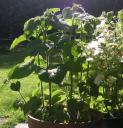 Köstliches vitaminreiches Naschobst
Köstliches vitaminreiches Naschobst
Den Namen erhielt die Andenbeere aufgrund ihrer Herkunft aus der Andenregion (Venezuela oder Chile).
Vor etwa 200 Jahren wurde sie von Seefahrern nach Südafrika ans Kap der Guten Hoffnung gebracht, daher auch das Synonym Kapstachelbeere. Dort wurde sie zunächst als rasch wachsendes Anti-Skorbutmittel verwendet.
Auch heute noch wird sie in Südafrika, Kolumbien, Indien, Australien und Kenia kultiviert.
